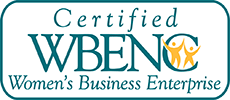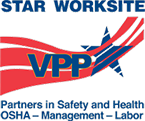Enhancing Your Confined Space Entry Program with the Hierarchy of Controls
Confined space entry programs are an essential part of ensuring the safety of your employees. There are significant hazards and risks in confined spaces ranging from hazardous atmospheres like oxygen deficiency and inert gases to physical hazards like rotating and energized equipment. That’s where the "Hierarchy of Controls" comes into play. This is a systematic approach that is widely used among industry and safety professionals to reduce risks and protect workers. Let’s outline the hierarchy, discuss simple examples of each, and explain why implementing it can improve your company’s confined space entry program.
What is the Hierarchy of Controls?
The hierarchy of controls was first introduced by the National Safety Council in 1950 and was later adopted by OSHA and NIOSH in the 1970’s and 1980’s. This is a five-tiered, systematic approach to managing hazards in the workplace where prioritization is placed on eliminating and controlling hazards over the use of personal protective equipment. The hierarchy is typically depicted as an upside-down triangle with the following tiers:

- Elimination – Remove the hazard completely
- Substitution – Replace the hazard with something less dangerous
- Engineering Controls – Isolate people from exposure to the hazard
- Administrative Controls – Change the way people work to reduce exposure
- Personal Protective Equipment (PPE) – Equip workers with protective equipment
Let’s break down each step in a little more detail and discuss how it relates to your confined space entry program.
Elimination
This is the most effective measure in the hierarchy as "eliminating exposure" to the hazard removes the risk entirely. One example that’s beginning to be more common in industry is the use of remote operated drones. The use of these devices eliminates the need to make entry into confined spaces to conduct routine inspections. It may not always be feasible or possible, but when it is, it’s a great strategy to reduce exposure for employees.
"Elimination is the most effective measure in the hierarchy as eliminating exposure to the hazard removes the risk entirely."
Substitution
When elimination isn’t an option, the next step is to replace the hazard with something safer. For instance, if a tank cleaning job uses a toxic solvent that has significant negative respiratory health consequences, switching to a non-toxic, biodegradable cleaner lowers the risk. While these cleaners may be less effective, the trade-off is the significant reduction in exposure and risk for workers in the confined space.
Engineering Controls
 If the hazard can’t be removed or replaced, isolation with engineering controls is the next most effective control measure. Take, for example, sewer systems prone to hazardous atmospheres. By installing ventilation systems to deliver fresh air, toxins in the atmosphere can be diluted to an acceptable level for entry while also minimizing inhalation exposures to employees. While engineering controls can require significant financial investments initially, the benefits far outweigh reliance on PPE, and generally lead to long-term cost savings in the future.
If the hazard can’t be removed or replaced, isolation with engineering controls is the next most effective control measure. Take, for example, sewer systems prone to hazardous atmospheres. By installing ventilation systems to deliver fresh air, toxins in the atmosphere can be diluted to an acceptable level for entry while also minimizing inhalation exposures to employees. While engineering controls can require significant financial investments initially, the benefits far outweigh reliance on PPE, and generally lead to long-term cost savings in the future.
"While engineering controls can require significant financial investments initially, the benefits far outweigh reliance on PPE, and generally lead to long-term cost savings in the future."
Administrative Controls
In many cases, despite our efforts of elimination, substitution, and implementation of engineering controls, the residual hazard and risk is still too high to be considered acceptable for safe entry into confined spaces. This is where modifying work practices can further reduce exposure. For example, in hot climates, confined space entries during the peak of summer days increase the chance of heat stress. Rescheduling these tasks for night shifts, when temperatures are more manageable, or shortening shifts from 12 to 8 hours, limits environmental risks. Strategic planning and timing of these tasks can make a significant impact on the safety of your entry.
Personal Protective Equipment
 And finally, as the last line of defense, PPE can be used to protect workers when all other control measures fall short. Consider our example of using ventilation to dilute toxins. In some situations, ventilation may not be enough to reduce exposure to below the permissible or occupational exposure limits. In these cases, workers will have to rely on respiratory equipment to provide sufficient protection from inhalation hazards. While using personal protective equipment is ubiquitous in industry work, it’s important to realize that this is the least effective measure of protecting workers for several reasons.
And finally, as the last line of defense, PPE can be used to protect workers when all other control measures fall short. Consider our example of using ventilation to dilute toxins. In some situations, ventilation may not be enough to reduce exposure to below the permissible or occupational exposure limits. In these cases, workers will have to rely on respiratory equipment to provide sufficient protection from inhalation hazards. While using personal protective equipment is ubiquitous in industry work, it’s important to realize that this is the least effective measure of protecting workers for several reasons.
- It relies on the user to wear it and use it correctly - if it's even used in the first place!
- It only protects the single user wearing it.
- The hazard is still present.
Two Important Notes
Something important to stress with the hierarchy is that while this is laid out in a linear “Elimination, if not, then substitution, if not, then…” progression, in practical application, you will likely be using a combination of multiple control measures in tandem to create a safe entry condition.
Another important note is that while our goal should always be to reduce exposures or risk to ALARA (as low as reasonably achievable) or ALARP (as low as reasonably practicable), the fact is that there will almost always be some level of residual risks that we will not be able to fully eliminate due to factors such as cost, time restraints, physical or technological limitations.
Applying the Hierarchy to your Confined Space Program
Now that we have a better understanding of what the hierarchy of controls is and some practical examples of each type of control, let’s look at steps we can take to implement it into your confined space entry program.
- Start by identifying and evaluating all confined spaces on your worksite and conducing a comprehensive assessment of the existing and potential hazards and risks associated with entry into each space. This includes identifying baseline physical, chemical, atmospheric, and environmental hazards without any existing control measures in place.
- Next, rank each of the identified spaces from greatest to least risk. There are multiple ways that this can be accomplished, but using a 5 x 5 Risk Matrix and assigning a quantified risk score is a simple and effective method.

- Finally, prioritize the confined spaces with the greatest risk score first, working your way down the list towards those spaces that pose less risk to workers. Systematically apply the hierarchy of controls to each hazard in each space until all risks are at an acceptable level.
"By systematically evaluating and addressing hazards, you ensure that each confined space entry is conducted as safely as possible."
Incorporating the Hierarchy of Controls into your confined space entry program is a great way to minimize the risks that your employees face. By systematically evaluating and addressing hazards, you ensure that each confined space entry is conducted as safely as possible. While some control measures may come with higher initial costs, the long-term benefits far outweigh these investments, both in terms of effectiveness and cost savings. By applying this approach to your confined space program, you can better manage hazards and create safer working environments for your team.
Interested in learning more about confined space entry programs and the hierarchy of controls? Check out our Entrant Attendant Supervisor Course.




